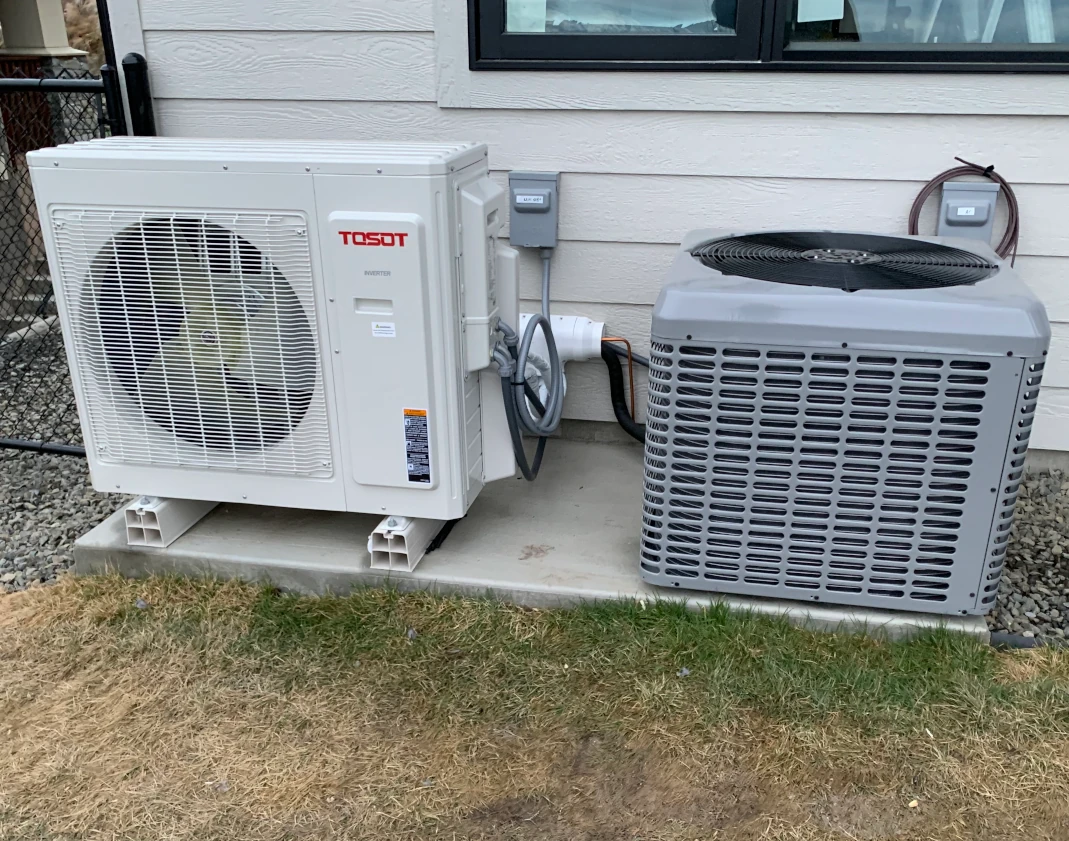What do the ratings mean on my HVAC equipment?

Heat Pumps
The ratings on heat pumps provide information about their energy efficiency and performance. Here are some key ratings you might encounter:
- SEER (Seasonal Energy Efficiency Ratio): SEER is a measure of the efficiency of an air conditioning system, including heat pumps, over an entire cooling season. It is calculated by dividing the total cooling output (in BTUs) by the total electrical energy input (in watt-hours). Higher SEER ratings indicate greater energy efficiency.
- HSPF (Heating Seasonal Performance Factor): HSPF measures the efficiency of a heat pump during the heating season. It is the ratio of the total heating output (in BTUs) to the total electrical energy input (in watt-hours) over the heating season. Like SEER, a higher HSPF indicates better efficiency.
- EER (Energy Efficiency Ratio): EER is similar to SEER but focuses on a specific set of conditions (steady-state, 95°F outdoor temperature, 50% relative humidity). It provides a snapshot of efficiency at peak cooling demand. Higher EER values signify better efficiency.
- COP (Coefficient of Performance): COP is a ratio of heating or cooling output to the energy input, expressed as a dimensionless number. For heating, a higher COP indicates better efficiency, while for cooling, it's the inverse (lower COP is better).
- Energy Star Certification: The U.S. Environmental Protection Agency (EPA) awards the Energy Star label to heat pumps that meet specific energy efficiency criteria. Energy Star-certified heat pumps are generally more energy-efficient than non-certified models.
When considering a heat pump, it's essential to balance the upfront cost with the long-term energy savings. Higher-rated heat pumps might have a higher initial cost but can result in lower energy bills over time. Additionally, local climate conditions and specific usage patterns can influence the optimal choice of a heat pump with the right efficiency ratings for your needs.
High Efficiency Furnaces
High-efficiency furnace ratings are typically measured by the Annual Fuel Utilization Efficiency (AFUE). AFUE represents the percentage of energy from the fuel that is converted into heat over the course of a heating season. Here's what different AFUE ratings mean for high-efficiency furnaces:
AFUE 90% and Above: Furnaces with AFUE ratings of 90% or higher are considered high-efficiency. This means that 90% or more of the fuel is converted into heat, and only 10% or less is lost as exhaust. These furnaces are designed to be very efficient, resulting in lower energy consumption and reduced heating costs.
AFUE 95% and Above: Some high-end, ultra-efficient furnaces boast AFUE ratings of 95% and above. These models are at the top of the efficiency scale, minimizing energy waste and providing maximum heating performance.
In practical terms:
-
Cost Savings: High-efficiency furnaces generally lead to lower utility bills because they use more of the energy from the fuel to heat your home.
-
Environmental Impact: They are more environmentally friendly as they produce fewer greenhouse gas emissions due to their efficient use of fuel.
-
Initial Cost: While high-efficiency furnaces can have a higher upfront cost compared to standard or low-efficiency models, the potential long-term energy savings often justify the investment.
When considering a high-efficiency furnace, it's essential to evaluate your specific heating needs, local climate conditions, and the cost of fuel in your area. The goal is to find the right balance between upfront costs and long-term energy savings to meet your comfort and budget requirements. Always look for the AFUE rating as a reliable indicator of a furnace's efficiency.
To learn more about the benefits of heat pumps/furnances, or the grants and rebates on offer and how to go about securing one, or about any other type of service an HVAC company can provide, call Macdonald Mechanical at 250-681-2600 or email us today!
